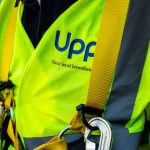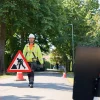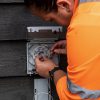L8r Huawei – Vodafone to Deploy OpenRAN in Wales and England

Mobile operator Vodafone UK has taken the bold decision to upgrade 2,600 sites (e.g. masts supplying 4G and 5G services), mostly in rural Wales and South West England, by using kit supplied as part of the new Open Radio Access Network (OpenRAN). The sites are currently served by Huawei.
Until recently Vodafone, much like BT (EE) and Three UK, looked set to continue using Huawei for a big chunk of their non-core 5G (mobile broadband) rollout. But all that changed in July 2020 after the Government’s U-turn to ban the “high risk vendor” from future deployments (here).
Like many operators, Vodafone has since been considering how best to replace the Chinese firm and they now appear to have opted for an OpenRAN approach, at least in part (i.e. Ericsson will remain their major supplier for the foreseeable future).
Advertisement
At present if an operator wants to buy mobile equipment then they can often only pick from a few big suppliers (e.g. Ericsson, Nokia and Samsung etc.), while the OpenRAN approach could increase the number of supplies by adopting a general-purpose, vendor-neutral hardware and software-defined technology approach (this specifically applies to the RAN side of things – infrastructure, masts and antennae).
Back in August 2020 Vodafone switched on their first live (non-trial) 4G OpenRAN site at the Royal Welsh Showground in Powys, Wales. Clearly that must have gone extremely well because the operator is now planning a much larger deployment across rural parts of South West England and Wales (FT – paywall). At least 2,600 masts and rooftop sites are due to be upgraded with this by 2027, with a full deployment starting in 2022.
Scott Petty, CTO of Vodafone UK, said:
“This commitment can get open RAN ready for prime time … The UK could regain a foothold which it hasn’t had since the break-up of Marconi.”
At this point you might be asking yourselves, why are they waiting until 2022 to start this? The answer is because the ecosystem (suppliers, kit, software etc.) are still developing and Vodafone will want to foster more of that. The technology was also developed with rural deployments in mind, although Vodafone does expect it to evolve into a “realistic alternative” to traditional methods in urban markets too (but not for a while).
The UK Government’s new Telecoms Diversification Task Force, which is being led by Ex-BT CEO and former trade minister, Lord Ian Livingston, has also pledged to explore how to help incentivise research and development of OpenRAN. Vodafone might be the first to jump into a serious commercial deployment, but it certainly won’t be the last.
Advertisement
Equally it remains to be seen whether or not having a wide diversification of supplies can truly provide the same level of support and reliability as the biggest players do today. At the same time if all of this helps to bring down the cost of rural deployments then the result could, in theory, be seen in wider coverage.
Mark is a professional technology writer, IT consultant and computer engineer from Dorset (England), he also founded ISPreview in 1999 and enjoys analysing the latest telecoms and broadband developments. Find me on X (Twitter), Mastodon, Facebook, BlueSky, Threads.net and Linkedin.
« Broadband ISP TalkTalk UK Has Stopped Selling Pay TV Boosts UPDATE






















































Does Open RAN translate to shared RAN in rural?
It may do potentially, quite how the providers are going to thrash out their frequency spectrum investment/competition, who knows.
Nothing for 2G only sites? Bit tired of being overlooked in this Cotswold area,small town of several thousand, then you hear of villages of a few hundred getting 4G masts being built.
There’s about 500 people in our village here and three put 5G on our only tower…..